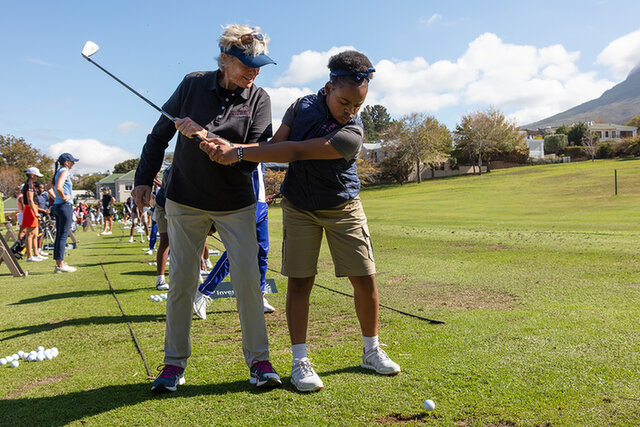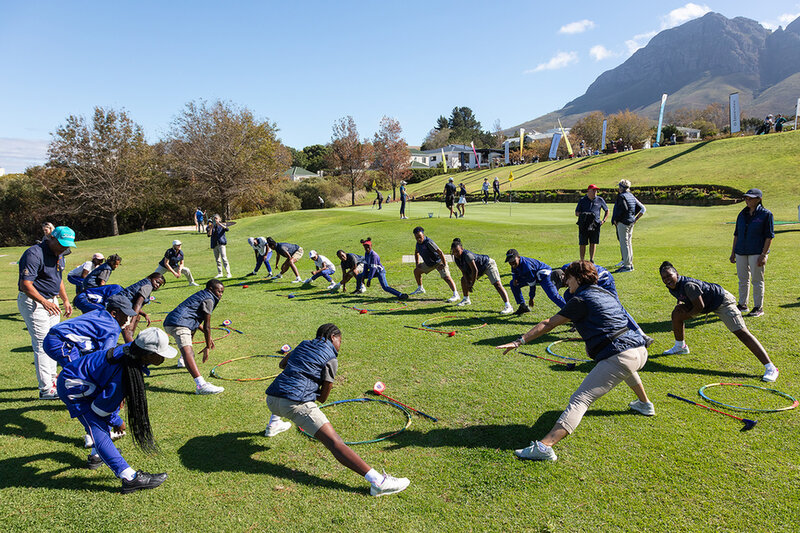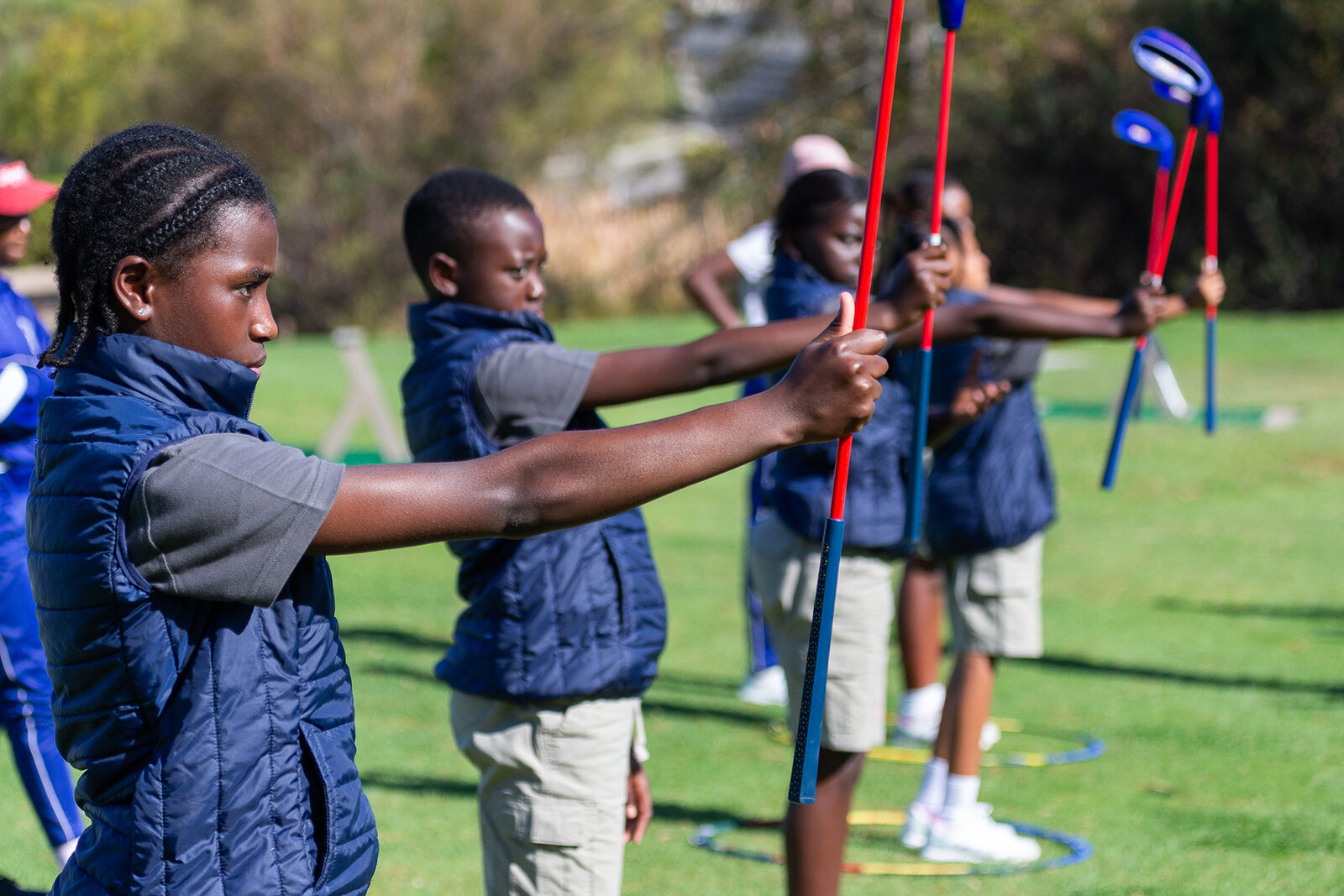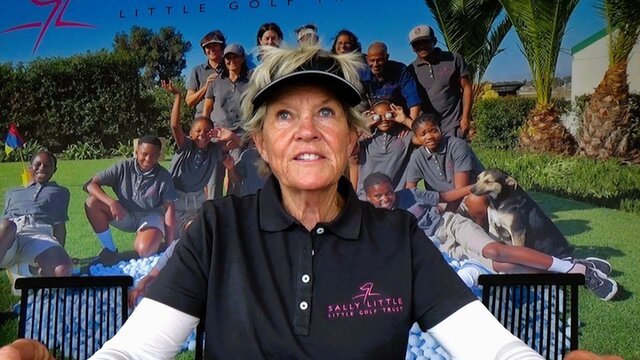PLAYING THE GAME
There has been an increase in the number of younger golfers in South Africa. Johann Naudé looks at how to keep this upward trend going
South Africa’s golfing landscape is experiencing a modest boom among youngsters.
A recent study by the R&A revealed that 38% of golfers in South Africa in 2023 were under the age of 35 – a significant 7% increase from the previous year. This promising trend is echoed by Handicaps Network Africa’s numbers, with a steady rise in junior memberships over the past few years.
While the findings from the R&A study places us above the global average (excluding the US), we still lag behind countries like Germany, France and Argentina.
To capitalise on this momentum and ensure a vibrant golfing future, attracting young players is crucial.
CEO of GolfRSA and the managing director of the South African Golf Development Board, Grant Hepburn, pinpoints the core challenge: ease of access.
Youngsters are bombarded with sporting options, with schools often prioritising readily available activities like football, cricket, rugby and netball. Golf, unlike these sports, often requires external initiation – a parent or guardian needs to introduce them to the game.
"Unless a child’s parents play golf," says Hepburn, "it is unusual for them to be exposed to the game because it requires someone to take them to a golf course or a driving range to get started. The biggest challenge is getting the youngsters to a facility that allows them to get a feel for the game."
This is where creative solutions come into play.

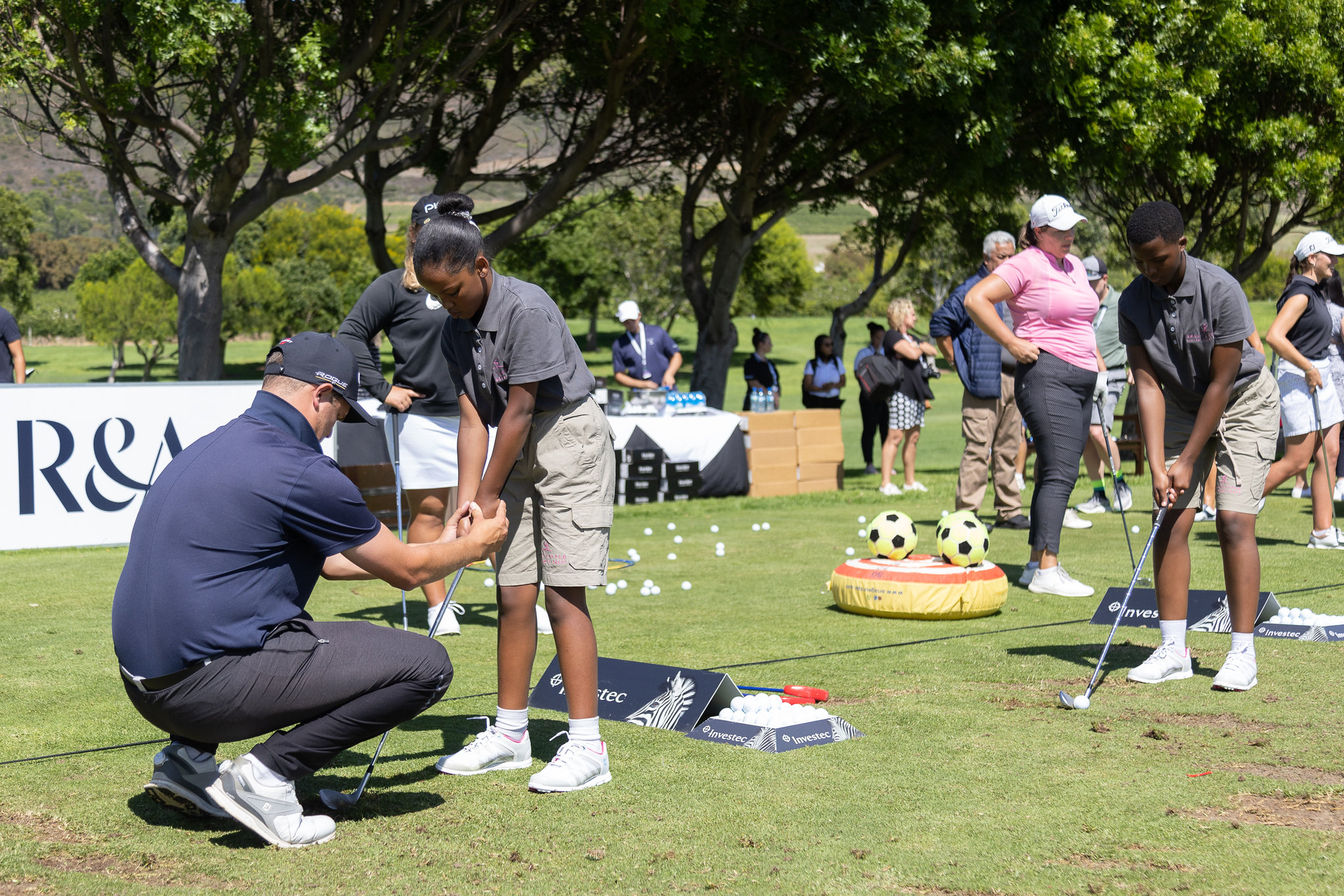
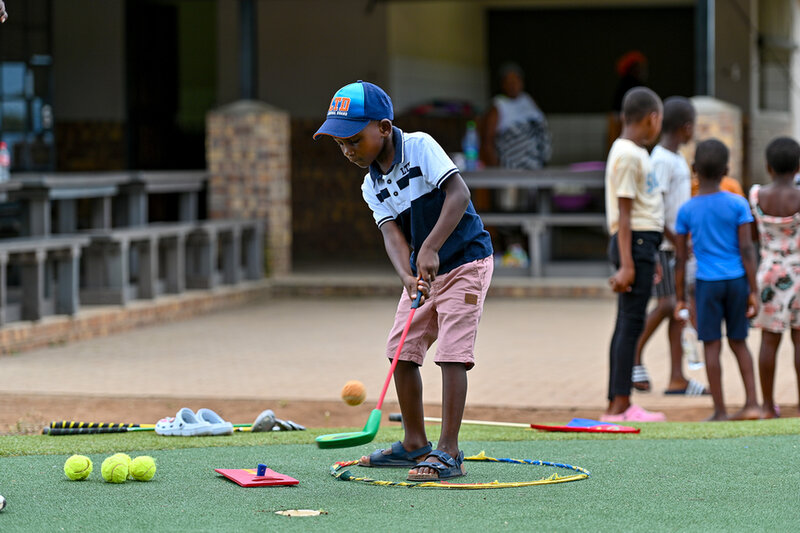
ACCESSIBILITY AND EXPOSURE
The Engaging Young People in Golf study by the International Journal of Golf Science underscores the importance of proximity: children naturally gravitate towards activities close to home.
The study, involving 29 expert coaches, suggests that clubs and driving ranges collaborate with nearby schools to spark early interest. Pop-up golf clinics and mobile simulators at schools or community centres can introduce kids to the game in familiar environments.
Clubs can also host open days and create school programmes, inviting entire classes to experience what it’s like at a course. To cater to children based further away, clubs can offer subsidised transportation options.
FUN, FAST AND FLEXIBLE FORMATS
Another hurdle young people face is limited free time. To help address this, GolfRSA in partnership with the R&A, has introduced a new format called GolfSixes. Shortened to just six holes with alternate shot play, GolfSixes offers a fun, fast-paced experience.
"Only playing six holes and hitting alternate shots with a partner or friend is proving to be very popular, as it is fun and takes less time," says Hepburn.
Similar formats and gamified practice sessions can keep kids engaged when they may not have the time or attention span for a full round.
CENTRE OF EXCELLENCE
Little discusses the role her centre plays in making golf in South Africa more accessible to youngsters.
watch now

CAMARADERIE AND MENTORSHIP
The study also highlights the importance of a welcoming atmosphere. Golf clubs can be very intimidating for juniors, and everyone – from the security guard at the gate to pro shop attendants to everyday members – should do their best to make young players feel welcome.
Clubs can also consider hosting parent-child tournaments, especially popular with young children, and creating buddy systems where older juniors mentor beginners. This not only builds confidence but also creates an atmosphere that’s about more than just hitting a ball.
MAKING IT AFFORDABLE
The game’s reputation for being expensive can be a major deterrent. Clubs can introduce starter packages with subsidised equipment rentals and coaching fees to tackle this perception. Scholarship programmes and sponsorships can further bridge the financial gap, making golf accessible to a wider demographic.
Club manufacturers might also consider reducing the price of their junior equipment. Getting more kids in the game will result in many more purchases down the line. Additionally, kids often retain a sentimental attachment to the first brand they play with and may stay loyal to it for the rest of their lives.
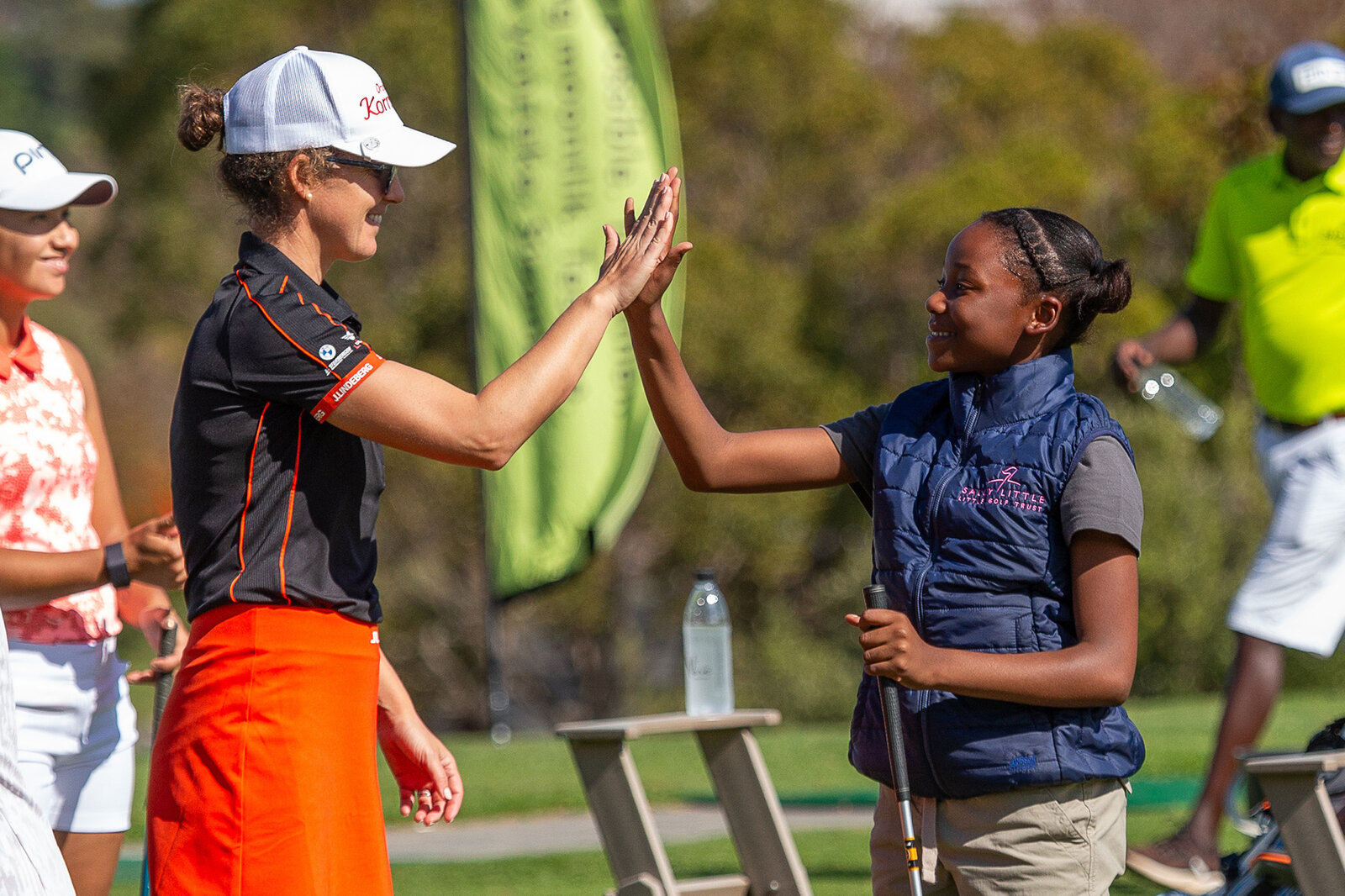
BUILDING A CULTURE OF LIFELONG LEARNING
Golf is a sport with a long learning curve that can never be mastered. Young players need to feel supported and encouraged during setbacks. Coaches who foster a growth mindset and celebrate progress – not just perfect swings – are key. Junior tournaments should prioritise fun and participation over fierce competition at a young age.
ENCOURAGING GIRLS TO PLAY
While overall golf participation is rising in South Africa, only a quarter of our golfers are female, placing us well below the global average. Therefore, tailoring programmes to girls is crucial. Initiatives can include creating female-centric golf clinics led by women coaches, offering flexible playing options, and highlighting successful female golfers as role models.
One great example of a successful female-centric programme is GiGS (Get into Golf Slowly), conceived 15 years ago by Leigh-Jane Middleton at Bryanston Country Club.
She explains: "We enlisted experienced female members to accompany and guide new female golfers, making them feel comfortable every step of the way – from the car park to checking in for greenfees, teeing off on the 1st hole, navigating the course, visiting the ladies’ locker room and, finally, enjoying the post-game experience at the 19th hole."
"To date, over 800 ladies have participated in this programme, with some choosing to continue their golf journey through regular female golf programmes and even representing their club in league play."
The future of the sport hinges on attracting a diverse range of young players, and, as initiatives like GiGS demonstrate, something as simple as a welcoming atmosphere and mentorship not only attracts new players to the game but, more importantly, also keeps them coming back for more.

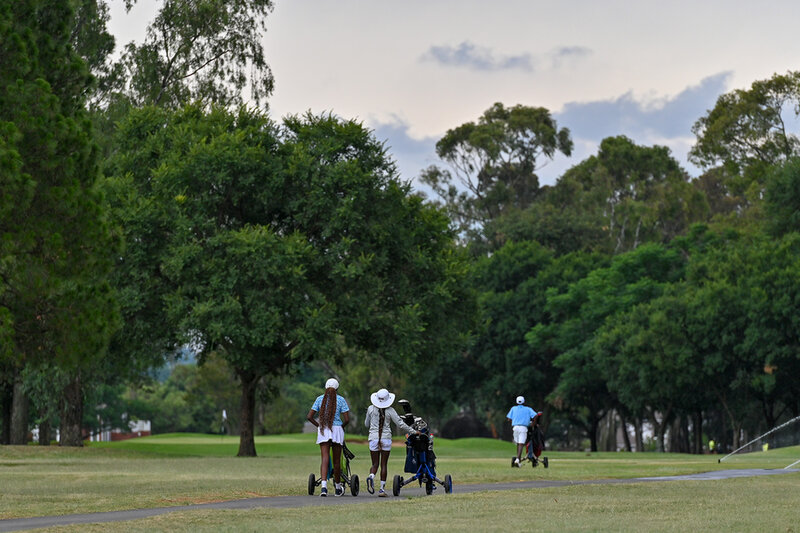
TROY WINFIELD/SUNSHINE TOUR/TRISTAN JONES/LET/SUPPLIED


